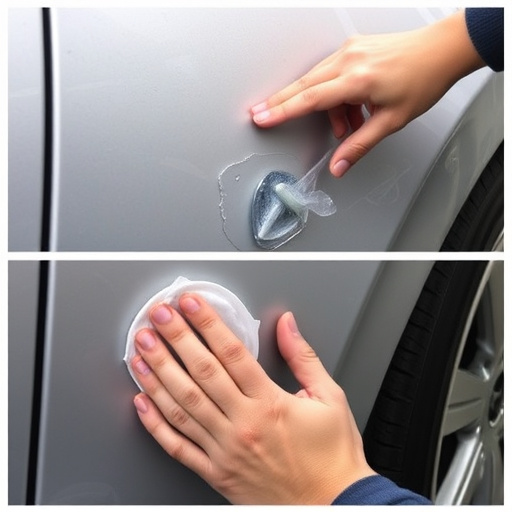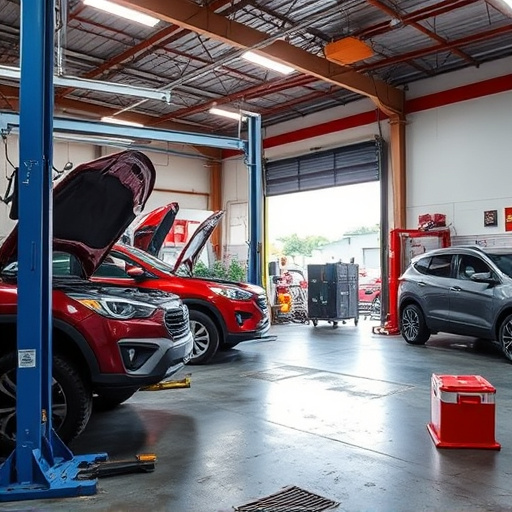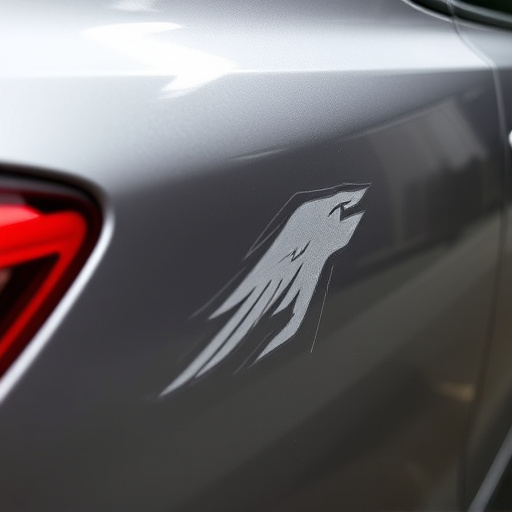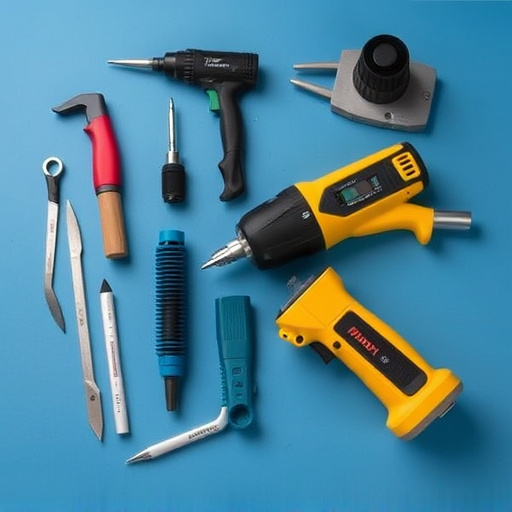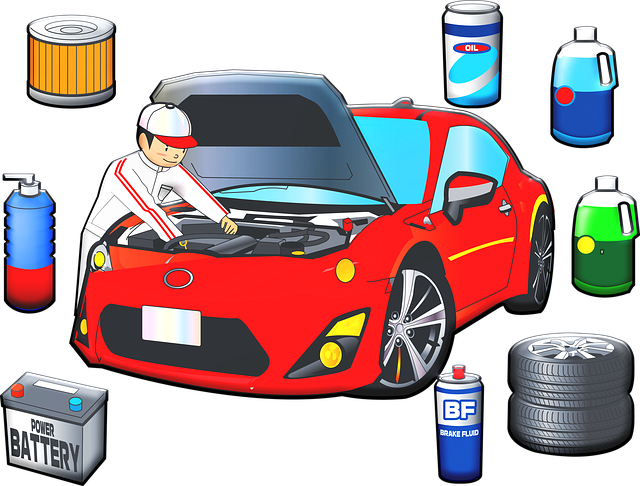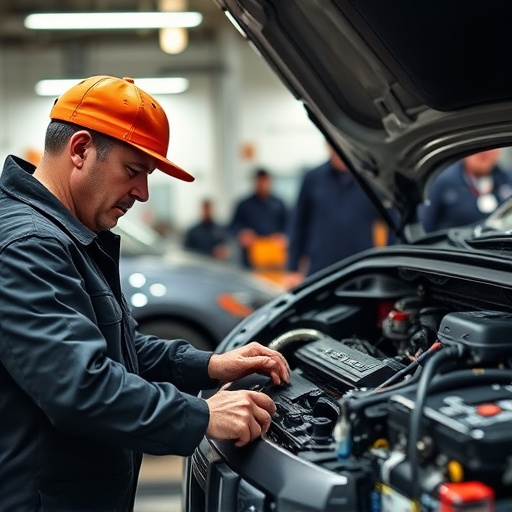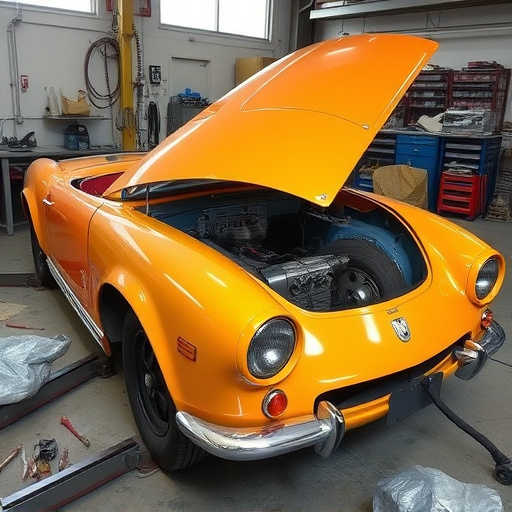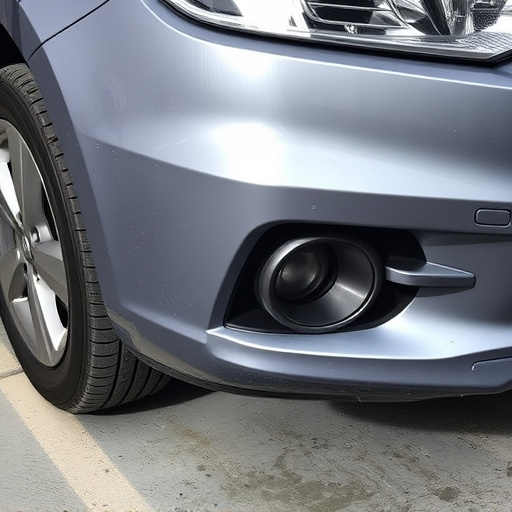Integrating OEM (Original Equipment Manufacturer) repair procedure access in modern collision centers is crucial for efficient, precise car repairs. This technology offers faster turnaround times and improved service quality, building customer trust. Automation through robotics and AI enables exacting tasks like panel alignment and paint application, despite initial investment challenges. Strategic implementation with data standardization and secure cloud infrastructure facilitates seamless information exchange, while autonomous vehicles will further emphasize these systems' importance in the future.
The future of automotive maintenance and repairs is being reshaped by the integration of Automated OEM Repair Procedure Access. As Original Equipment Manufacturers (OEMs) embrace digital transformation, the way vehicle repairs are executed is set to evolve significantly. This article explores the concept of seamless access to OEM repair procedures, its numerous benefits, and the challenges that lie ahead. We delve into strategies for successful implementation and gaze into the promising future of automated OEM repairs.
- Understanding OEM Repair Procedure Access Integration
- Benefits and Challenges of Automating OEM Repairs
- Strategies for Seamless Implementation and Future Prospects
Understanding OEM Repair Procedure Access Integration
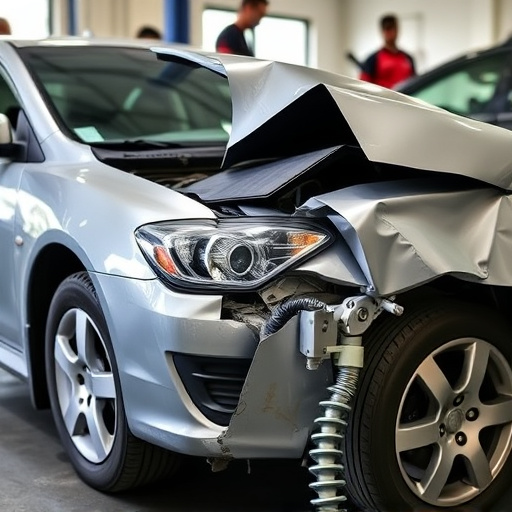
In the realm of automotive maintenance and repairs, understanding OEM (Original Equipment Manufacturer) repair procedure access integration is paramount for modern collision centers. This innovative approach streamlines the car collision repair process by providing seamless access to detailed OEM procedures, ensuring that every repair is executed with precision and adherence to manufacturer standards. With a comprehensive digital library of these procedures readily available, auto body painting and other specialized tasks become more efficient and accurate.
The integration of OEM repair procedure access enables technicians to quickly retrieve the latest guidelines for specific vehicle models, making it easier to navigate complex repairs. This technology not only enhances the overall quality of collision center services but also reduces the time typically spent locating and understanding intricate repair manuals. As a result, customers benefit from faster turnaround times and superior post-repair outcomes, fostering trust in the facility’s capabilities.
Benefits and Challenges of Automating OEM Repairs
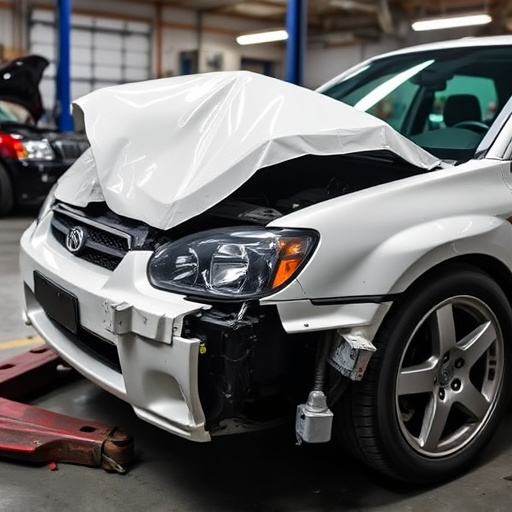
The automation of Original Equipment Manufacturer (OEM) repair procedures offers a myriad of benefits for both automotive businesses and consumers. By integrating advanced technologies, such as robotics and artificial intelligence, into the repair process, auto body restoration can be accelerated, resulting in faster turnaround times and improved efficiency. This is particularly advantageous for busy individuals who rely on their vehicles for daily commuting or running errands, reducing inconvenience caused by lengthy repairs. Moreover, automation ensures precision and consistency in car body repair, minimizing human error and enhancing overall quality. With automated systems, complex tasks like panel alignment and paint application can be executed with exacting accuracy, leading to superior cosmetic outcomes.
However, the path to fully automated OEM repair procedure access is not without challenges. Significant initial investments in state-of-the-art equipment and training are required to implement these technologies effectively. Auto dent repair professionals need to adapt to new systems and processes, which may require retraining existing staff or hiring individuals with specialized skills. Additionally, ensuring interoperability between different automated tools and software can be a complex task, demanding careful planning and coordination. Despite these hurdles, the advantages of automation in auto body restoration far outweigh the challenges, paving the way for a more efficient, precise, and customer-centric automotive repair industry.
Strategies for Seamless Implementation and Future Prospects

Implementing automated OEM (Original Equipment Manufacturer) repair procedure access integration requires a well-thought-out strategy to ensure seamless transitions. One key approach is standardizing data formats and communication protocols across different systems, facilitating smooth information exchange between dealerships, manufacturers, and repair shops. This standardization should encompass all aspects of the repair process, including diagnostics, parts ordering, and work instructions. Additionally, investing in robust cloud infrastructure ensures secure storage and quick retrieval of vehicle-specific data, enabling authorized personnel to access the latest repair procedures on-demand.
Looking ahead, the future prospects for automated OEM repair procedure access integration are promising. As autonomous vehicles gain traction, these systems will become even more critical, providing real-time diagnostics and repair instructions tailored to advanced vehicle technologies. Moreover, the integration of artificial intelligence (AI) and machine learning algorithms can predict common issues based on historical data, proactive maintenance schedules, and personalized repair recommendations, enhancing efficiency in automotive repair, including vehicle bodywork, auto glass repair, and other specialized services.
The integration of automated OEM repair procedure access holds immense potential to transform the automotive industry. By streamlining the repair process, reducing costs, and enhancing efficiency, this technology promises a future where vehicle maintenance is faster, more accurate, and environmentally friendly. While challenges exist, including data security concerns and the need for widespread adoption, strategic implementation strategies offer a promising roadmap. As we move forward, continuous innovation in this domain will not only benefit repair shops and OEM manufacturers but also contribute to a greener and more sustainable transportation ecosystem.


